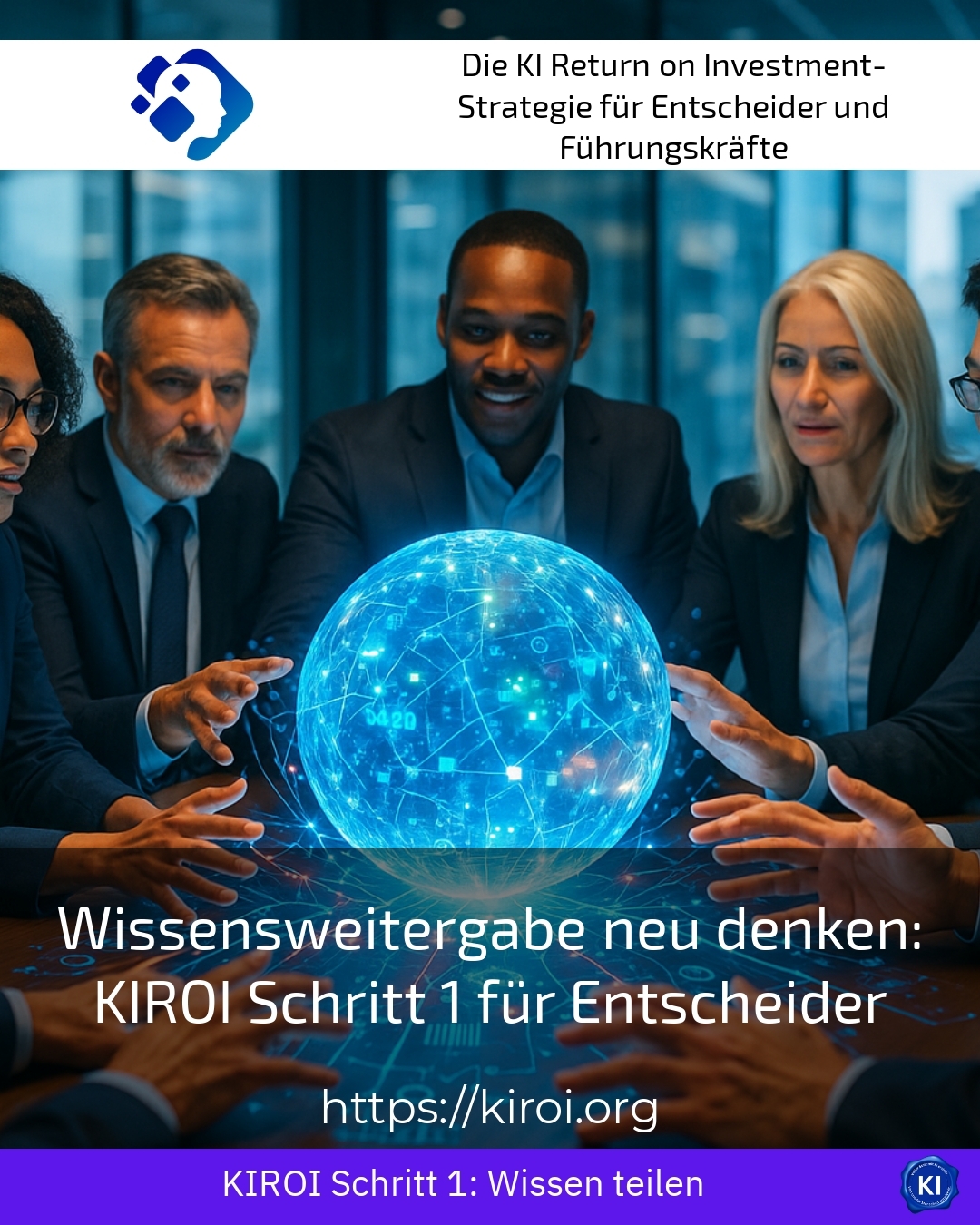The importance of Knowledge transfer in companies is constantly growing, as it is a key factor for sustainable success and competitiveness. It is important to rethink traditional methods and develop new strategies that are tailored to the individual requirements of organisations. The first step in the KIROI approach for decision-makers offers helpful impulses to optimise the Knowledge transfer in a structured and effective manner.
Understanding knowledge transfer as a strategic challenge
For many decision-makers, the question arises as to how valuable knowledge can be permanently secured and effectively passed on within the company. Typical situations from practice show that knowledge often remains unutilised or is lost when employees leave the company. For example, a medium-sized mechanical engineering company reported that important company knowledge was not systematically passed on when employees retired. Teams from the IT sector also complained about inefficient documentation that made newcomers feel insecure. In the pharmaceutical industry, too, it became apparent that experience was not shared sufficiently, which limited innovative strength.
BEST PRACTICE with one customer (name hidden due to NDA contract) In one software company, the introduction of structured mentoring systems and targeted workshops Knowledge transfer optimised. The combination of face-to-face dialogue and digitally documented knowledge enabled new teams to be trained more quickly and productivity to be noticeably increased.
KIROI Step 1: Analysing and identifying valuable knowledge
The first step of the KIROI approach recommends carrying out a comprehensive inventory of existing knowledge. Decision-makers should define clear criteria as to which knowledge and experience are particularly valuable to the company. Methods such as expert interviews, workshops or the use of digital tools for knowledge documentation can help here.
Examples from the SME sector show that regular knowledge surveys using questionnaires or moderated exchange formats can uncover important knowledge gaps. In the automotive industry, a structured knowledge map led to critical production information becoming visible. At the same time, HR departments are improving the retention of junior staff through targeted learning tandems, in which experienced and young employees work together and learn from each other.
Practical tips for decision-makers on the effectiveness of knowledge analysis
1. determine who the most important knowledge carriers in the company are and encourage them to actively share their knowledge.
2. use digital platforms to centralise knowledge and make it accessible to everyone.
3. encourage face-to-face meetings and workshops in which knowledge is communicated in a lively and practical way.
An international consulting firm observed a measurable reduction in familiarisation times and improved cross-team collaboration following the introduction of these measures.
Innovative methods for knowledge transfer - more than just documentation
In addition to traditional documentation, personal and interactive methods play a central role today. Mentoring, storytelling and workshops support the active Knowledge transfer. For example, quality management teams at mechanical engineering companies use targeted storytelling to create lively knowledge about process improvements. In service companies, digital learning platforms enable training that is independent of time and place and is used by many employees.
The principle of the „learning spiral“, in which knowledge is constantly renewed through social interaction, documentation and application in day-to-day work, is firmly anchored in the KIROI approach. Regular „lessons learnt“ workshops help to gather findings from projects and apply them even better in the future. This means that knowledge transfer is not just reactive, but actively integrated into the company's development.
Customer examples at a glance
- A logistics company established monthly barcamps that promote interdisciplinary dialogue and initiate practical solutions to problems.
- A technology group implemented a combined mentoring and e-learning programme that quickly expanded the skills of new employees.
- A pharmaceutical company uses digital tools to collect and share knowledge from field work, which has improved collaboration between sites.
Support knowledge transfer in change processes
Decision-makers are often faced with the challenge of ensuring the transfer of knowledge during restructuring or employee turnover. This is where transruption coaching can offer valuable support. It supports teams in actively shaping the transition and systematically safeguarding existing knowledge. It is important to address fears and promote motivation for openness.
An example from a service company shows that the willingness to share knowledge has increased as a result of combined workshops and individual coaching sessions. Employees often report that they feel seen and valued as a result, which strengthens team spirit.
My analysis
The Knowledge transfer is an essential task for modern organisations. KIROI Step 1 helps decision-makers to tackle this task systematically and find individualised ways to ensure sustainable knowledge transfer. Practical examples from various industries illustrate how important a combination of personal dialogue and digital methods is. A culture of openness and the continuous promotion of knowledge sharing is crucial. In this way, knowledge transfer can be understood as a dynamic process that strengthens companies in the long term.
Further links from the text above:
Knowledge transfer - definition, methods, examples
Knowledge management in the company: The 3 best methods
Knowledge transfer methods: Strategies for securing knowledge
For more information and if you have any questions, please contact Contact us or read more blog posts on the topic Artificial intelligence here.















